Taranaki sheep farmer Murray Jackson is looking forward to retiring his woolshed in a couple of years.
He's phasing his family farm out of wool production to rear hardy and hairy Australian White sheep.
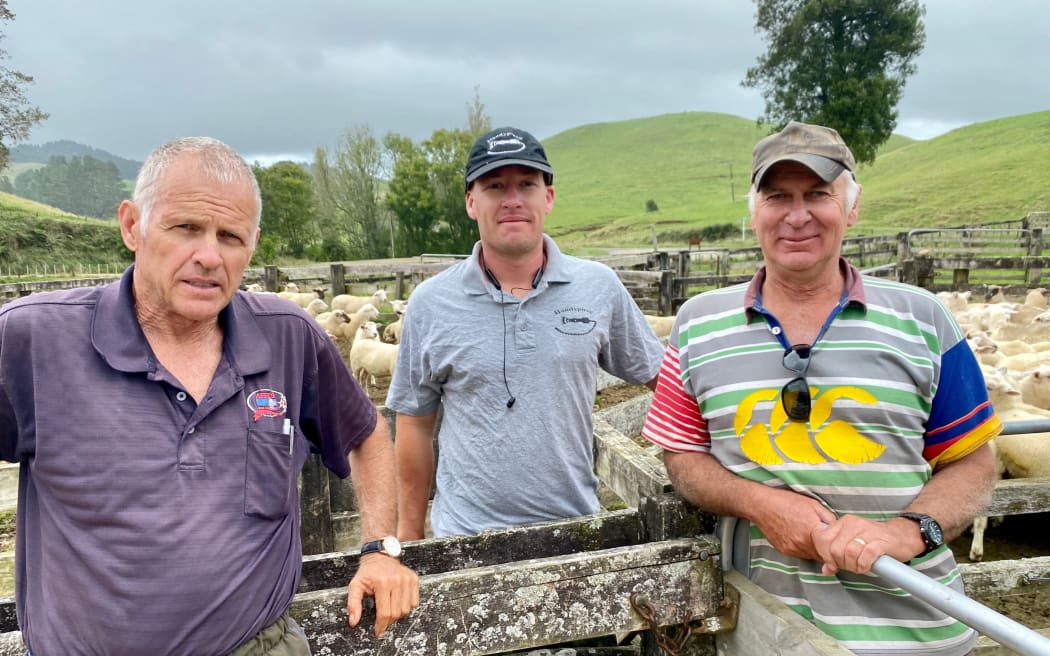
Affco buyer Howard (from left), Cruise Hamilton, and Murray Jackson. Photo: RNZ/Leah Tebbutt
With their coarse hair coat, Australian White sheep don't need shearing, crutching, dagging, or flystrike prevention - which currently costs around $6000 a year, Jackson says.
The fresh lambs also tend to have a faster growth and survival rate.
Looking to the future of the Stratford station, Jackson says the cost of shearing has become too prohibitive.
"With my summer shear, the shearing bill was $20,000 for ewes and lambs shorn. The wool sale was about $3000 ... From the two days of shearing, we made about a $17,000 loss."
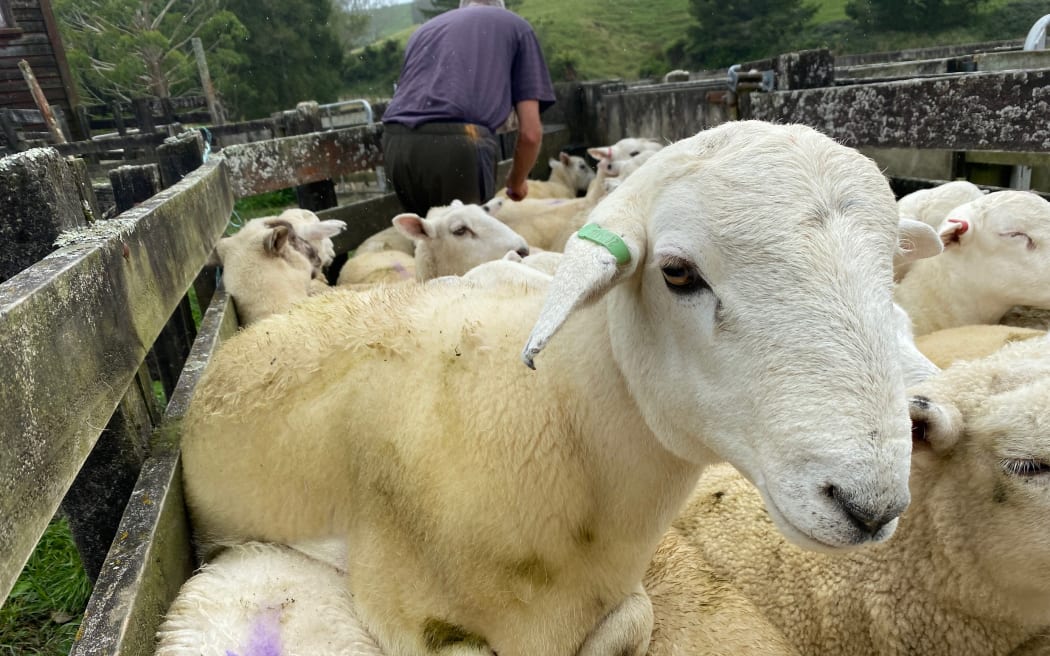
An Australian White crossed with a Wiltshire with part of its coat shedding. Photo: RNZ/Leah Tebbutt
With Jackson's new breed of sheep, shearing goes out the window as their coats are shed naturally in the paddock.
He's two years into the journey, having cross-bred Australian White sheep with his Wiltshire ewes by artificial insemination. This process will need to be repeated a few times before the sheep are purebred.
Jackson believes there could be some safety in his sheep retaining a portion of Wiltshire genetics as they're already well adapted to local conditions.
"The possible downside is that the rams I bought originally have problems with their feet so I'm changing my stud-breeder in Australia.
"One other aspect of the breed which I perceive to be really beneficial is the fact that they lamb twice a year compared to all our English breeds of sheep which only lamb once a year.
"So the Australian White ewes are polyestrous."
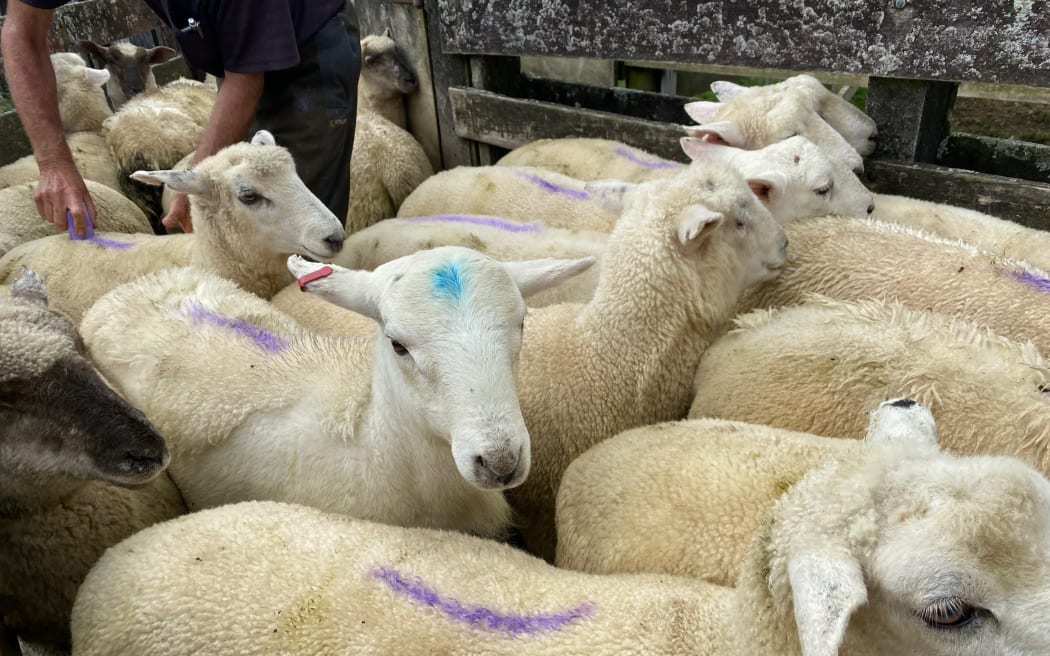
An Australian White crossed with a Wiltshire with part of its coat shedding. Photo: RNZ/Leah Tebbutt
Jackson says he picked the Australian White breed for its quality meat although does not believe his farm has the capacity to sell its own brand as many Australian White farmers are doing across the ditch.
There are about 1,300 breeding ewes on the station as well as 300 to 400 hogget replacements that lamb, as well. One hundred Angus breeding cows and about 50 hectares of the farm are in pine forest.
Jackson's hairy sheep aren't the only aspect of the farm that is embracing the changing world. His son and fellow farmer Cruise Hamilton has employed drone technology to help muster the sheep.
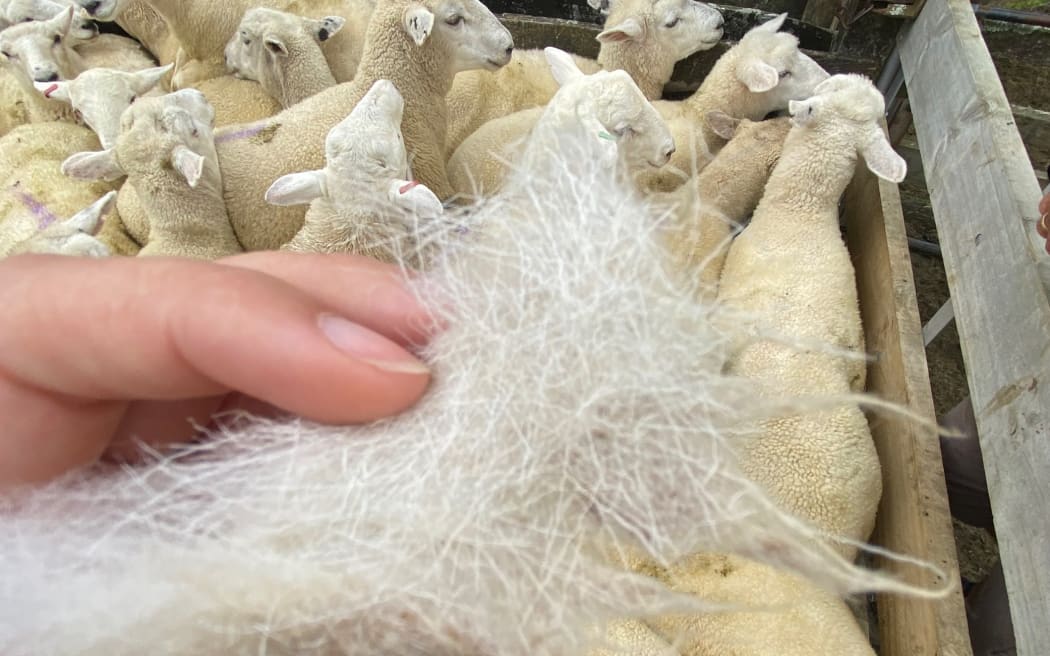
A look at the mixed coat from the first breed. Photo: RNZ/Leah Tebbutt
"What my dogs could normally do, the drone surpasses that. It can fly over the hills, I can get a birdseye view and I can drop down.
"The sheep seem to be really scared of the noise that it makes. They seem to think it's some sort of apex predator that will take its life, so they run away from it."
Hamilton says the drone makes it easy to find lost sheep, while it also moves a lot quicker than a dog.
"Now I find it's actually better than the dogs."
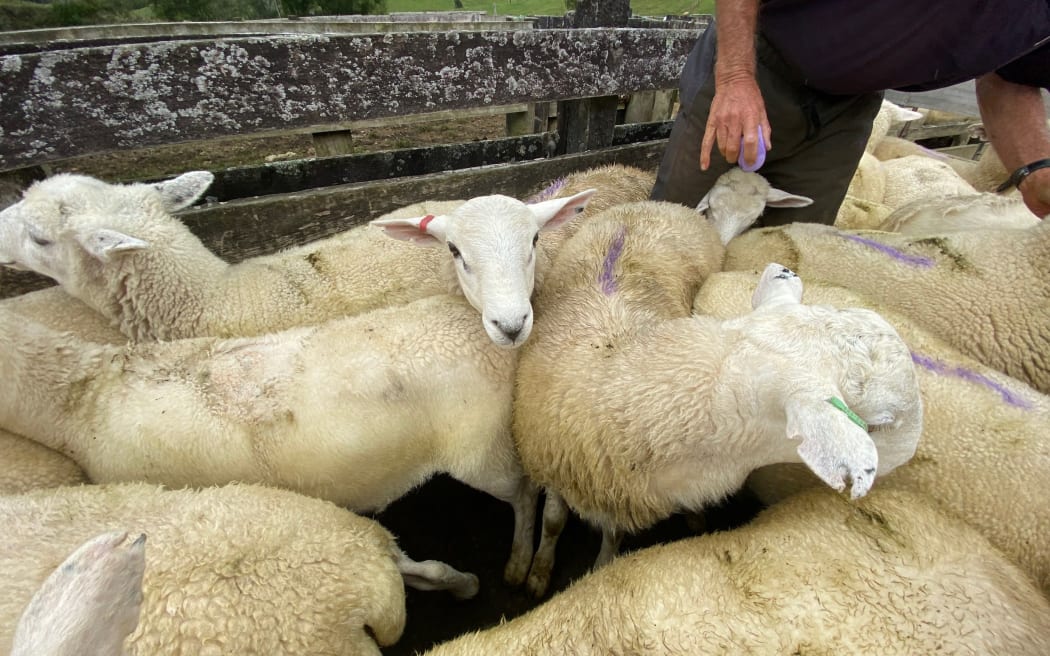
The second round of Australian Whites are heading off to their local meat processor. Photo: RNZ/Leah Tebbutt
But that doesn't mean the dog's role on farm is redundant.
"They can get really close. They have a lot more power than the drone, the drone is really persuasion. But the dogs can get behind them and bark and stare at them.
"The sheep still hate the dogs more than the drone ... the sheep have a harder time pushing through a dog whereas a drone, you don't actually want the sheep to touch the drone at all otherwise your drone's down."
You can watch Cruise Hamilton's drone footage of mustering and other farm tasks on his YouTube channel Farm With Me.


